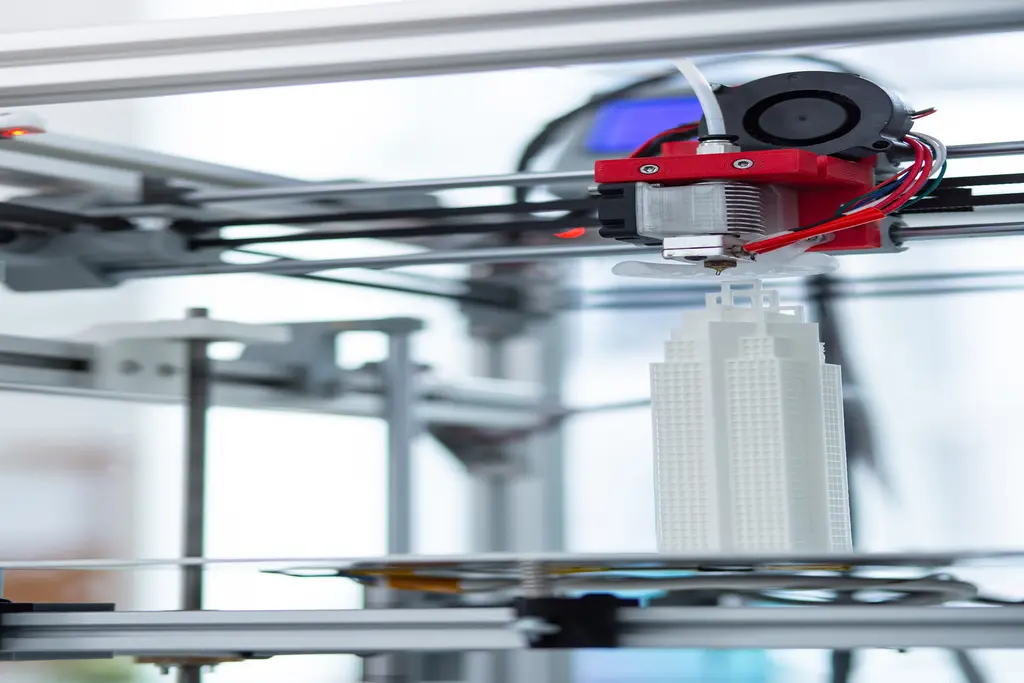Gone are the days of blueprints on clipboards and guesswork with duct tape. Currently, construction sites look a lot like the settings from science fiction films with drones, robotic tools and hi-tech helmets working alongside people. Read on if you’d like to know more about all the new tech trends out there (and avoid getting left behind). This blog will give you the inside scoop on the top construction technology happening in 2025 that changed the building game.
What You’ll Learn in This Blog
By the time you finish this blog, you’ll know all about:
- What construction technology is and how it’s transforming modern construction.
- Construction technology is not just about innovation, it’s about real impact. It’s improving safety, enhancing efficiency, and elevating project quality. From reducing work injuries to cutting down on design errors, the benefits are tangible and significant.
- Real-world construction technology examples from drones to robotics.
- How construction engineering technology bridges innovation and infrastructure.
- The top construction technology trends to watch in 2025.
- Discover the practical benefits of construction technology for contractors, project managers, and developers. From increased productivity to improved safety, these are the advantages that can transform your projects.
- Future outlook and how to stay competitive in a rapidly evolving industry.
What Is Construction Technology?
Imagine building smarter, faster and safer all at once. That’s exactly what today’s evolving construction industry is doing with the power of construction technology. But what exactly is it? Construction technology uses modern devices, machines, computer software and procedures to advance how constructions are designed and carried out. Today, technology is changing every part of the job site from digital models to AI in managing projects. It will continue to grow in 2025.

The Rising Importance of Building Construction Technology
2025 isn’t just another year in fact it’s a turning point. Because money is tight, cities are growing and workers are hard to find, construction requires more intelligent strategies. That’s the role that building construction technology plays in making it easier. Those new ideas are real solutions to actual issues. Things like wearable sensors, automated layout systems and software for 3D models are making work on construction sites safer, more effective and less expensive. Industry experts believe that companies using digital technologies can increase their productivity by as much as 25%.
The Role of Construction Engineering Technology
Behind every groundbreaking innovation is a strong foundation of engineering. That’s where construction engineering technology comes in. This exciting field blends traditional engineering principles with cutting-edge tech to design and build infrastructure that’s stronger, greener and more efficient. Whether smart cities rely on digital twins for continuous oversight or AI for early maintenance this combination of technology and engineering ensures sustainable buildings for the future.
Why Construction Technology Matters in 2025
The Construction Industry Has a Problem—Actually, Several
Let’s face it—building something today isn’t as simple as stacking bricks and calling it a day. Currently, skilled workers are hard to find, construction costs quickly rise and projects never finish on time. These problems don’t go unnoticed—they seriously hold back the industry each year by costing billions. In reality, research shows that labor shortages are rising by 2–3% each year, resulting in delayed projects and low productivity everywhere.
Good news? The industry isn’t just sitting around with a hard hat and a hope. Since the past decade began, more than $10 billion has been invested in construction technology to help deal with these issues. As a result, things are moving forward well. By using software and drones, companies can move faster, work safer and make smarter decisions.
Technology Is the Toolbox for Tomorrow’s Builders
Imagine replacing hours of manual layout work with a robot that does it in minutes and never needs a break! That is precisely the effect that’s happening. In Real-world construction technology examples such as robots, protective gear for workers and predictive AI are becoming valuable when older processes fail. Using drones we can get site data very quickly. AI can identify problems in advance which helps prevent budget overruns. And robotics? The workers are completing the walls and pouring concrete faster this year.
Overall, construction technology is more than a trend. It’s exactly what the industry needs.

Top 10 Construction Technology Trends to Watch in 2025
Wearable Technology and Connected Work Sites
Improvements are here for those familiar hard hats. Now, smart helmets, vests and biometric wearables are monitoring crew heart rates and work area risks in real time, helping site managers keep them safe and motivated. Wearable devices in combination with an IoT network cut down on work injuries by up to 30%.
Robotics and Automation
What if your next layout crew doesn’t need lunch breaks or coffee? Robots execute challenging tasks flawlessly, including bricklaying, welding and printing layout designs. For instance, the FieldPrinter from Dusty Robotics marks construction layouts on floors, letting workers know where everything goes without human error or the need to spend hours or days preparing.
3D Printing and Advanced Materials
Yes, we’re now printing buildings literally. It’s possible to directly produce walls, bridges and custom pieces using 3D printing technology at the building site. When used alongside self-healing concrete, we are now building faster and smarter. As a result these advances are making the industry more eco-friendly and saving materials.

Augmented Reality (AR) and Virtual Reality (VR)
Forget imagination; now you can walk through your project before it’s even built. Because of AR and VR, architects, contractors and clients can see what a structure will look like, find errors early and provide staff with realistic training. Immersive technology tools are associated with a 40% reduction in design errors on job sites.
Artificial Intelligence (AI) and Machine Learning
Imagine AI as the project manager continually operating around the clock. Studying lots of different data, AI and machine learning anticipate delays, improve resource use, and point out potential budget risks early. The result? Better estimates, quicker choices and easier project completion.
Drones for Site Surveying and Monitoring
Don’t want to spend so much time waiting for your survey results? Let the drones get the job done. Drone use on construction sites has grown, allowing for safety checks by air, creating maps of the work area and keeping track of development while it’s happening. They operate quickly, accurately and save a lot of manual surveying work.
Digital Twins
Imagine having a live version of your job site that stays updated and is always correct. That’s the decisive advantage of digital twins. They enable us to monitor equipment, spot mistakes early and arrange maintenance by prediction. This allows the firms to reduce rework and downtime in all critical areas.

Blockchain for Contracts and Supply Chains
Now, all contracts have trust and transparency already included. Contracts and materials in construction are now being managed differently thanks to Blockchain. With Blockchain, fraud decreases, transactions are smoother, supply chains are safer and far less paperwork is involved.
Project Management and Field Data Collection Software
Say goodbye to spreadsheets and hello to real-time collaboration. Using eSUB and Rhumbix, teams can gather information, follow progress and talk with each other instantly at the job site. The result? A better schedule, better organization and plenty less stress.
Sustainable and Smart Building Materials
In construction, green is now the new priority. Smart and recycled materials are encouraging builders to both choose new materials and use them in innovative ways. Even ordinary concrete is being replaced by self-healing forms, which means less maintenance and longer-lasting structures.
Construction Technology Examples and Applications
Real-World Tech Making Construction Smarter
Just imagine flying over a construction site and seeing clear, detailed maps on your screen without landing. That’s exactly what drone surveying offers fast, safe and precise data collection that replaces days of manual work. With these aerial eyes, assessments can be completed more quickly and with fewer expensive errors caused by people.
Robots and AI Which Are Your New Best Helpers on Site
What if your layout team could perform around the clock without stopping or making errors? Thanks to FieldPrinter from Dusty Robotics, automated layout printing robots make it possible to mark floors and walls straight from digital plans with fewer mistakes and less time taken. At the same time, AI-based schedulers review project information to project delays and help use resources more effectively so timelines are maintained and costs stay as planned.

Wearable Sensors Provide Safety Meets Innovation
It isn’t enough to just wear a hard hat; now we have band, vest and hat options. Wearable sensors are always watching for signs of danger to workers and their environments. According to various studies, wearables are reducing construction site accidents by up to 30%.
Bridging Digital and Physical Workflows with Construction Engineering Technology
The future isn’t just about individual tools because it’s about connecting them seamlessly. Construction engineering technology integrates digital models, IoT devices and on-site machinery to create a unified workflow. This integration ensures real-time updates flow between design teams and field workers to reduce miscommunication and speed up project delivery. It’s a game-changer for complex infrastructure projects where precision and timing are critical.
Challenges and Solutions in Adopting Construction Technology
The Hurdles Every Construction Firm Faces
Adopting a new system can be fun until you consider the money involved and the training needed. For many construction companies, the main challenge is paying for the initial construction technology. New design tools and software are not free and can require a lot of effort to understand. Since connecting these new systems to what teams already do isn’t always easy, companies may face difficulties and put projects on hold.
Turning Barriers Into Building Blocks
But there’s no cause for concern: innovative companies stay true to their ideals by thinking outside the box. Businesses are making adoption easier by choosing where to invest and teaming up with technology developers. Using leased equipment, staged implementations, and education sessions allows companies to pay for things in stages and reduce the chances of causing disruption. There is broad agreement that efficiency gains and lower mistake rates mean positive results in the first year.
Why Construction-Specific Software Makes All the Difference
Straight-from-the-shelf software doesn’t fulfill what is needed for construction. This is why custom project management apps for construction such as eSUB, are in demand. Using these apps, field staff can collect information easily, collaborate in real time and combine all data with other systems on the spot. They help unify digital processes, making it easier and more successful for people to use new technology.
Future Outlook: Innovations to Expect Beyond 2025
The Next Wave of Smart Construction Tech
Want to learn what lies ahead in construction? Over the following years, new changes in construction engineering technology will occur at an even greater speed. Among the biggest advantages will be predictive maintenance powered by AI, which enables engineering projects to avoid shutdowns due to equipment breakdowns. So far, this approach has lowered maintenance expenses by up to 25% for some of the early users.
Building Greener and Smarter Cities
Sustainability is no longer optional because it’s the foundation of tomorrow’s construction. Real progress will be made in creating concrete that doesn’t add to carbon emissions and composites from recycled plastics. Together with smart city technology, these materials will strengthen infrastructure that is efficient in energy and eco-friendly which supports a cleaner and healthier city life.
Blockchain: The Unsung Hero of Construction
Do you think blockchain is just for cryptocurrencies? Think again. The use of Blockchain is expanding fast in construction engineering, mostly related to safe data transfer and clear contract terms. Through resistant-to-fraud records, Blockchain is making disputes less likely and boosting trust throughout the entire building sector.
Conclusion: Why Embracing Construction Technology is Essential
The Game-Changer for Efficiency, Safety and Innovation
Imagine completing projects faster, safer and with fewer errors. Sounds like a dream, right? That’s the main idea behind building construction technology. From using robots for faster work to wearing safety gadgets, suitable technology improves every part of construction. Our progress is built on innovation since our industry is constantly changing and growing.
Stay Ahead, Stay Competitive
If you want to know what is construction technology? It’s clear: the ones who succeed tomorrow are the ones who use technology today. Industry experts have already seen the benefits of using digital tools, AI and smart materials. Those involved need to keep up by learning new skills, making smart budget choices and changing as needed. Keep in mind, introducing new construction technology helps your company take the lead, not only follow along.
Excited to start creating real change in your building projects? Learn about the most recent technology developments, examine novel solutions and meet up with those who can guide you in building your systems. Let’s work together to make a better tomorrow.
Frequently Asked Questions (FAQs) About Construction Technology
Q1: What exactly is construction technology?
Construction uses new tools, technology and approaches to ensure that projects are completed efficiently, safely and always of the highest quality. The sector deals with robotics, drones, AI in project management and sustainable construction materials.
Q2: Why is construction technology important in 2025?
In the year 2025, the construction industry is expected to confront problems such as a lack of workers, money overruns and delays. Advanced tools and techniques in construction allow teams to overcome these difficulties by speeding up productivity, improving security to reduce mistakes and keeping costs manageable for helping projects move along more smoothly.
Q3: Which of the newest construction technology trends are worth considering?
Trends in construction include wearable devices, the use of robots and automated systems, 3D printing, AR and VR technology, AI, drones, digital twins, blockchain solutions for contracts, online project management software and sustainable approaches to building materials.
Q4: How does the use of technology protect workers during construction?
Thanks to wearables, sensors and real-time monitoring, hazards are found early on and the health of workers is monitored, meaning accidents are less likely. Wearable tech has helped lead to a 30% decline in workplace injuries in certain situations.
Q5: What problems do companies encounter when introducing new advancements in construction?
Upfront expenses, instructing employees and merging technology with existing platforms are usual problems. Even so, businesses manage to address these problems by focusing their investments, joining forces and employing program management tools made for their fields.
Q6: What changes in construction technology can we expect after 2025?
We believe greater use of AI, sustainable supplies, linked city devices and Blockchain will make the construction industry greener and more advanced.
Q7: Is it possible for small construction companies to adopt these new technologies?
Yes! A lot of the solutions come in scalable versions, with options to lease and with a phased system that makes them easy to afford. Another advantage is that you often see the ROI fast thanks to higher efficiency and fewer project risks.

